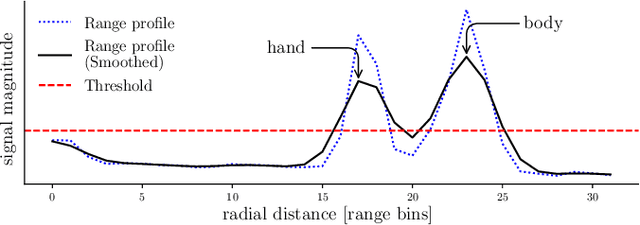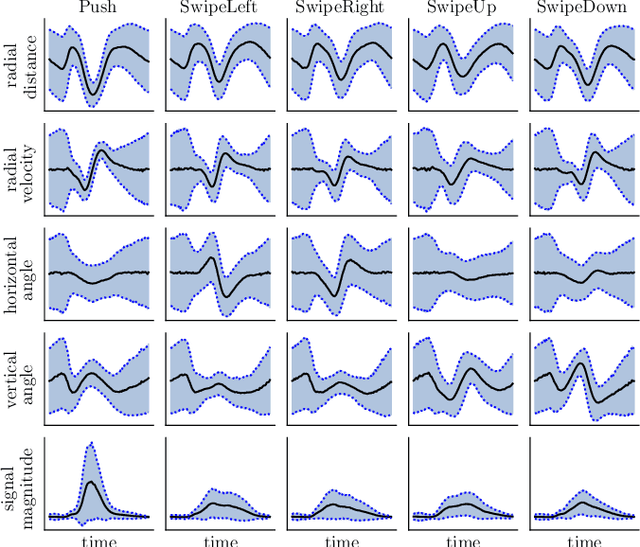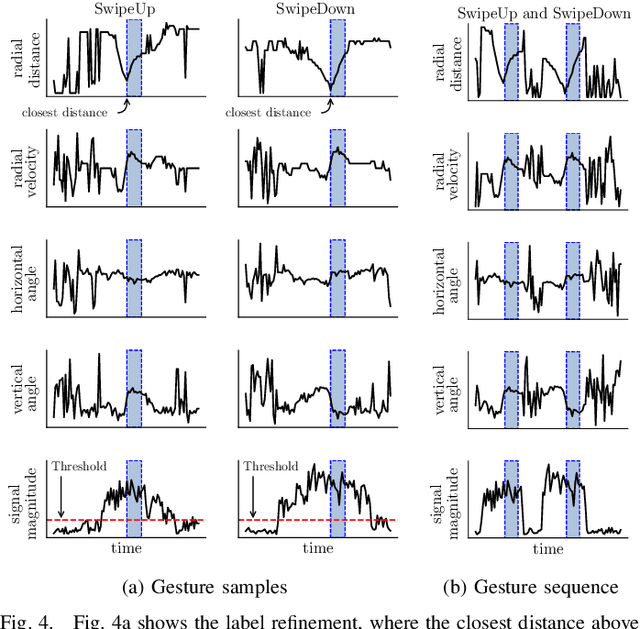Maximilian Strobel
Resonate-and-Fire Spiking Neurons for Target Detection and Hand Gesture Recognition: A Hybrid Approach
May 22, 2024Abstract:Hand gesture recognition using radar often relies on computationally expensive fast Fourier transforms. This paper proposes an alternative approach that bypasses fast Fourier transforms using resonate-and-fire neurons. These neurons directly detect the hand in the time-domain signal, eliminating the need for fast Fourier transforms to retrieve range information. Following detection, a simple Goertzel algorithm is employed to extract five key features, eliminating the need for a second fast Fourier transform. These features are then fed into a recurrent neural network, achieving an accuracy of 98.21% for classifying five gestures. The proposed approach demonstrates competitive performance with reduced complexity compared to traditional methods
Gesture Recognition for FMCW Radar on the Edge
Oct 13, 2023



Abstract:This paper introduces a lightweight gesture recognition system based on 60 GHz frequency modulated continuous wave (FMCW) radar. We show that gestures can be characterized efficiently by a set of five features, and propose a slim radar processing algorithm to extract these features. In contrast to previous approaches, we avoid heavy 2D processing, i.e. range-Doppler imaging, and perform instead an early target detection - this allows us to port the system to fully embedded platforms with tight constraints on memory, compute and power consumption. A recurrent neural network (RNN) based architecture exploits these features to jointly detect and classify five different gestures. The proposed system recognizes gestures with an F1 score of 98.4% on our hold-out test dataset, it runs on an Arm Cortex-M4 microcontroller requiring less than 280 kB of flash memory, 120 kB of RAM, and consuming 75 mW of power.
Clustering with Deep Learning: Taxonomy and New Methods
Sep 13, 2018



Abstract:Clustering methods based on deep neural networks have proven promising for clustering real-world data because of their high representational power. In this paper, we propose a systematic taxonomy of clustering methods that utilize deep neural networks. We base our taxonomy on a comprehensive review of recent work and validate the taxonomy in a case study. In this case study, we show that the taxonomy enables researchers and practitioners to systematically create new clustering methods by selectively recombining and replacing distinct aspects of previous methods with the goal of overcoming their individual limitations. The experimental evaluation confirms this and shows that the method created for the case study achieves state-of-the-art clustering quality and surpasses it in some cases.
 Add to Chrome
Add to Chrome Add to Firefox
Add to Firefox Add to Edge
Add to Edge